I hoarded a lot of links to tools again, and am putting aside some time to share them here. Here’s another tool post!
I just opened a blog category called “tools” in which you can read all my writing about open source, freeware, or small tools from small devs.
At this point I feel like I’ve already said everything I can possibly say about the wonderful world of tools, coming out of this space… It’s an inspiring area that never fails to surprise!
One thing that I’ve been thinking about lately is the intersection between tools and games. When you take something functional (utilitarian) and place it into a playful context (toy, or game).
I wanted to do a talk about this but I’m too burned out, so a blog post will have to do!
It goes without saying that programming is a broad field. Game development intersects with creative coding, intersects with generative art, intersects with all these spaces being open source… So there’s this really playful element you discover when you tinker with creative coding spaces like OpenProcessing… when you just have a non-concrete idea but decide to follow it and see where it goes. Coding becomes more of a collaboration between you and the computer, where you create this little visual experiment and just explore wherever that tangent takes you… In doing so, sometimes you make mistakes but the mistakes stay because even those look beautiful. Both game developers and people that make generative art with things like Processing know what I’m talking about.
Generative art just surprises you. The joy found in making this type of stuff is in how it surprises you, defies your original intentions, goes in all these wonderful directions…
It’s what makes art on computers so special.
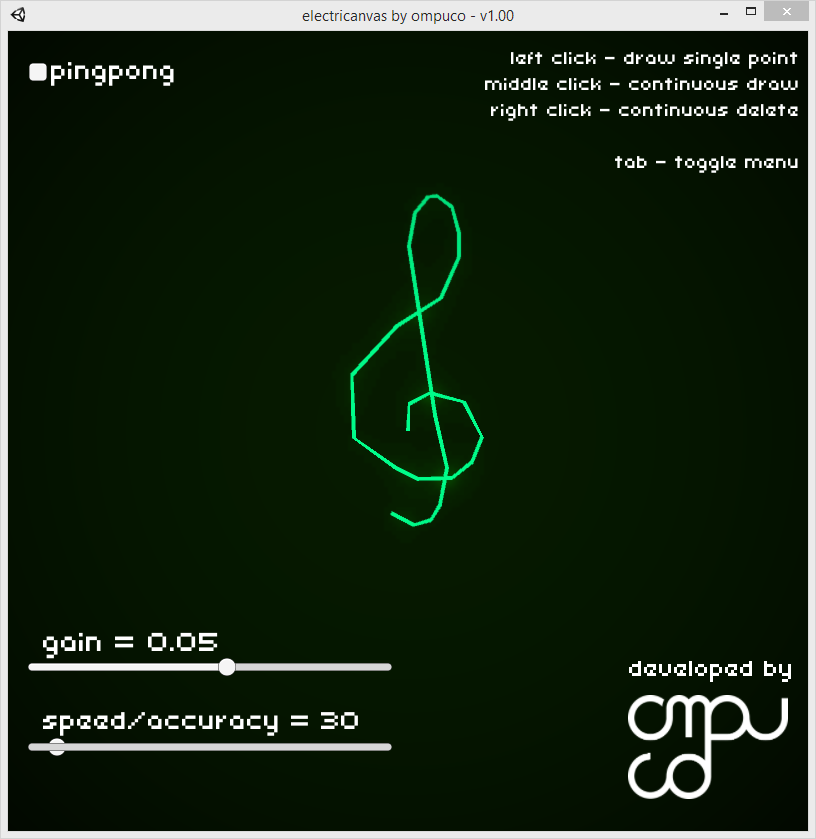
– electricanvas by ompu co
“use the mouse to draw out vector coordinates that are played via the soundcard in real time. hook up your computer’s stereo audio output to the X and Y channels on an oscilloscope to render your drawing live.”
For example, there’s this adorable little art and sound drawing tool called electricanvas that I discovered the other day. The premise may seem simple, the art made in it isn’t elaborate at all, but I ended up really losing myself in it.
You draw lines and it generates sound based on your art.
The interesting thing about projects like this is how they have their own language for interfacing with them. You don’t know how to use them. You have to discover what it does and how it does it. This makes them more like a toy, than just a tool. Often the resulting art is chaotic, uncontrollable, almost a happy accident.
Flippory is a good illustration of this…
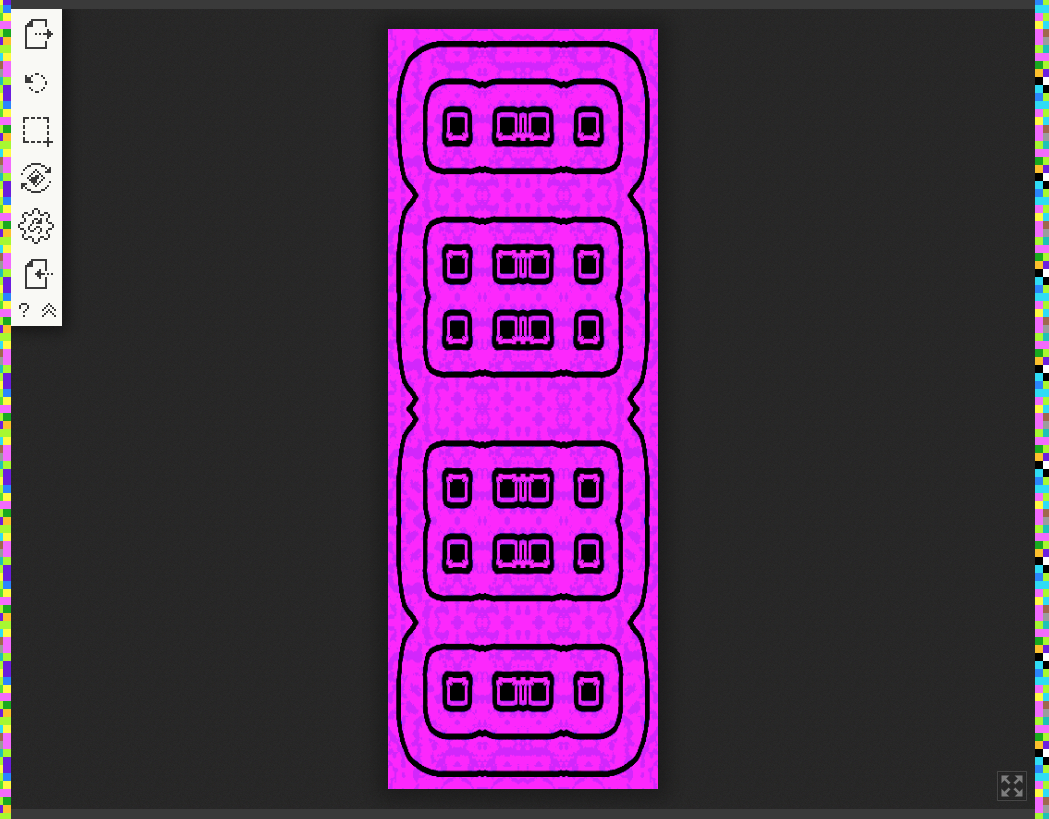
– Flippory by Bludgeonsoft
Flippory is a browser based art tool that flips, mirrors, and replicates your image (or part of it), letting you scramble your art in aesthetically pleasing ways. It’s a small browser tool that specializes in basically glitching your art in a very specific way.
What I find interesting about things like this, the small experiments that lend themselves to doing just ONE very unusual thing, is that you can collect them and use them in combination with the Professional art tools you work in. You kind of invent use for them.
It’s like the internet is riddled with tiny tools that you can collect, and they end up being really meaningful to you in that One Weird Way… In the end, you might not have much need for a graceful way of mirroring an image, but it sure makes for fun tiles… There, I found a use for it already!
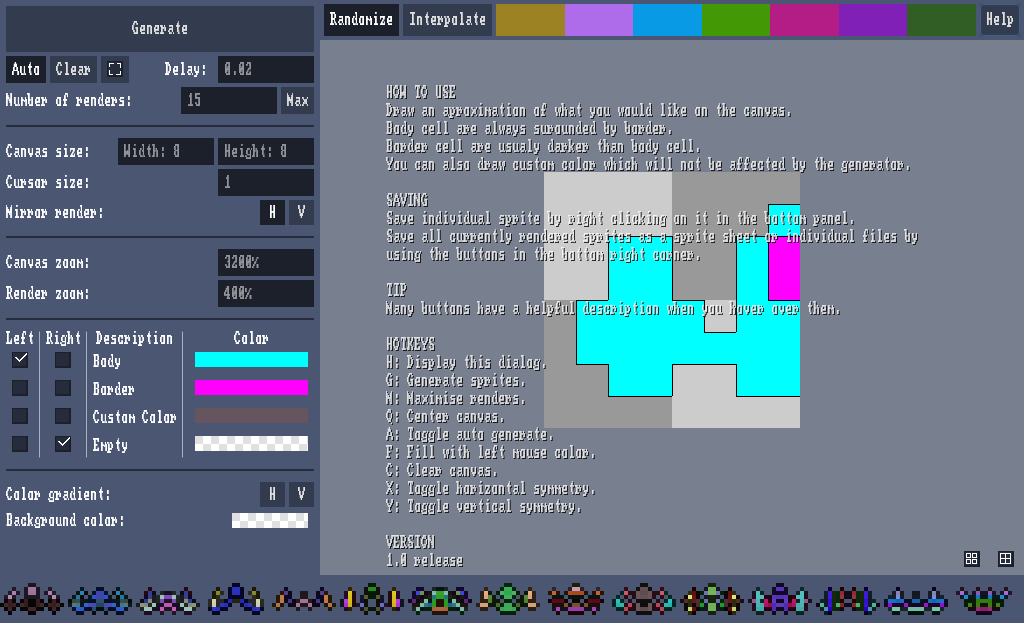
– Sprite Generator by indubitablement
A useful example of a generative art experiment intersecting with a useful tool is Sprite Generator ($5.99).
I think this is wonderfully novel. You draw your sprite in a canvas. What you draw serves as a “suggestion” for sprites that are then generated around that. You can procedural generate an indefinite amount of game sprites. It also offers an interesting set of features like bulk exporting, customizing the color palette… It’s a full fledged tool for creating strange and interesting game sprites.
I liked working in it. I could see it serving more as inspiration for creating sprites since the generated ones end up being very unique. Sprite Generator is useful in a very niche way. I find it inspiring for that!
It’s a good example of something you didn’t know you needed.
– Perspective Sketch by shindoh
Even more in line with that is Perspective Sketch.
It reminds me of that 90’s art toy Spirograph, but on the computer. It’s specific to perspective line drawings and it’s REALLY interesting for how it hyper focuses on just that ONE way of drawing.

– Polytomizator by Stone Tao
Computer art (games, software “sketches”, creative doodles, generative art…) is unique for how singular the art in it ends up being. When we think about art styles that define the “computer” look we often default to pixel art, or retro styles (like CRT effects, or ASCII), but there’s so much more to it.
It’s glitch art, it’s intelligent geometric shapes, strange shaders that open up a world of ways for looking at the same thing… There’s this broad growing spectrum of visual possibilities brought into reach, made all the more appealing for how they break. The beauty of malfunction is almost what defines it.
Like, I think it’s fascinating how much work a developer will put into replicating a specific way that an image will break, or a very specific type of compression, so it can be applied to a game.
For example see JPGPU (for Unity).
“A post processing image effect that emulates the Discrete Cosine Transform (DCT) method used in JPEG compression, to give your locally played game a crunchy internet-streamed look.”
– OoBaCuLi Fibrous Being by ERYNGI
So that’s what I love about all this… the unique “voice” that you discover as you are collaborating with the computer.
Like classic physical art has it’s own set or rules imposed by the surrounding world (watercolors are wet and they will run if you add too much water, thus making them hard to control), computer art has this too but the rules are created by the developer. It’s subjected to the fictional digital reality built around it (or built into it).
I think this is what makes this space fascinating.
The intersection between toys and tools happens when software rejects its utilitarian form, and the developer invents new ways of letting the end user make something. The interface itself defines the creative output.
There are so many wonderful examples of this. It’s what I’m trying to do with the Electric Zine Maker… a stunning example of this concept is OoBaCuLi Fibrous Being. It captures the feeling of being given a strange, almost alien, interface device… and you must discover how it works.
Once you do you are rewarded with beautiful art. You can save the art that you make in it.
It’s not completely random. You can control it to an extent, but you’re only given a small amount of control over the digital chaos. It’s not completely generative either, because you still have a say in what is happening… It really is a collaboration between you and the machine.
It’s as much of a toy as it is a tool. You could almost call it a game for how it has its own playful language.
The relationship between player, the creative space (UI), the game and what it’s tasking you to do (the “fiction” for lack of a better word), all inform the art… the art is unique for that entire strange environment it is coming from.
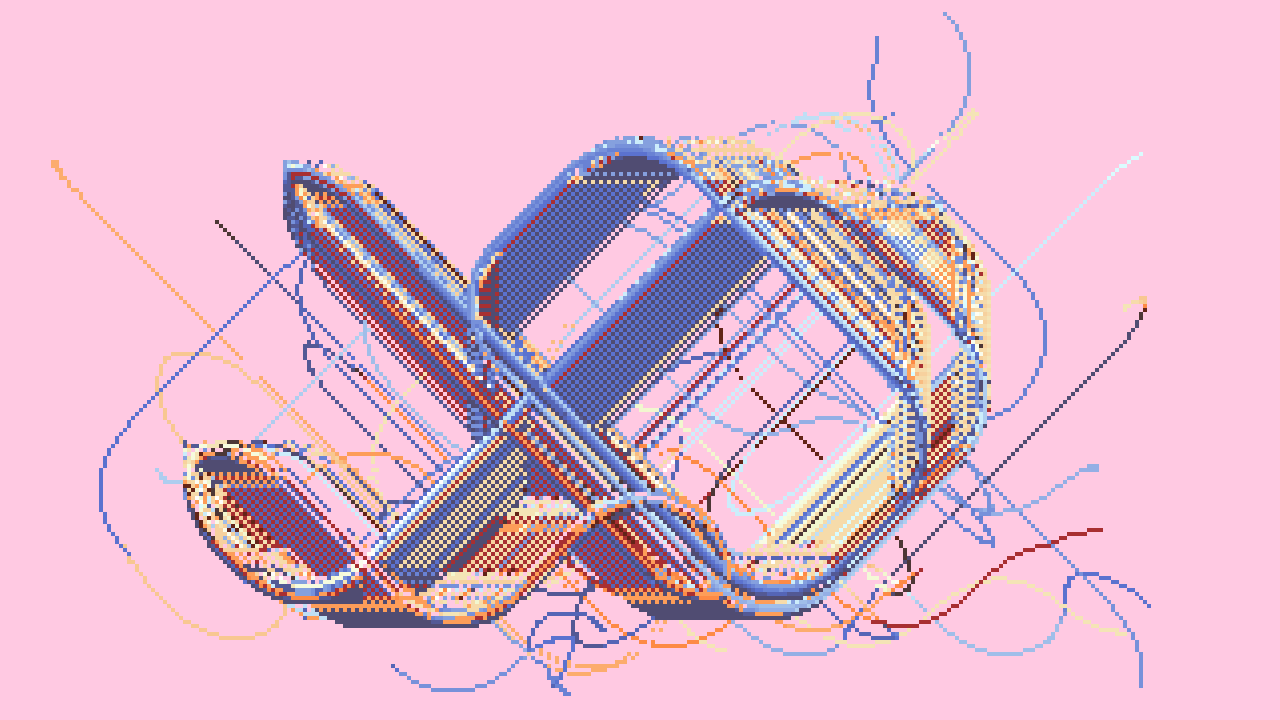
Programmers make these digital “sketches”, or experiments. I think things get interesting when this gets taken further and nobs, sliders, ways of manipulating values are added… so that someone can manipulate the output of said strange visual creation. This is when art tools turn into toys, and I think this is a very special space for how it makes these aesthetics accessible to anyone.
I’m linking to this talk by Char Stiles for it’s relevance: https://vimeo.com/547842658 It’s worth watching. It’s very inspiring.
Char Stiles // OSSTA Lecture Series, 4/28/2021 from STUDIO for Creative Inquiry on Vimeo.
Visual styles associated with computers are an important part of our creative vocabulary. It exists in analog art now too.
This visual language has made its way into the “real world”… You could almost say that computers dreaming of electric sheep have rubbed off on us… But I’m getting carried away.
Generative art is co-creation. Somewhere, balanced between the intent and the outcome, you manage chaos in a meaningful way with plenty of room for interpretation.
Generative art is a great example of the death of the author.
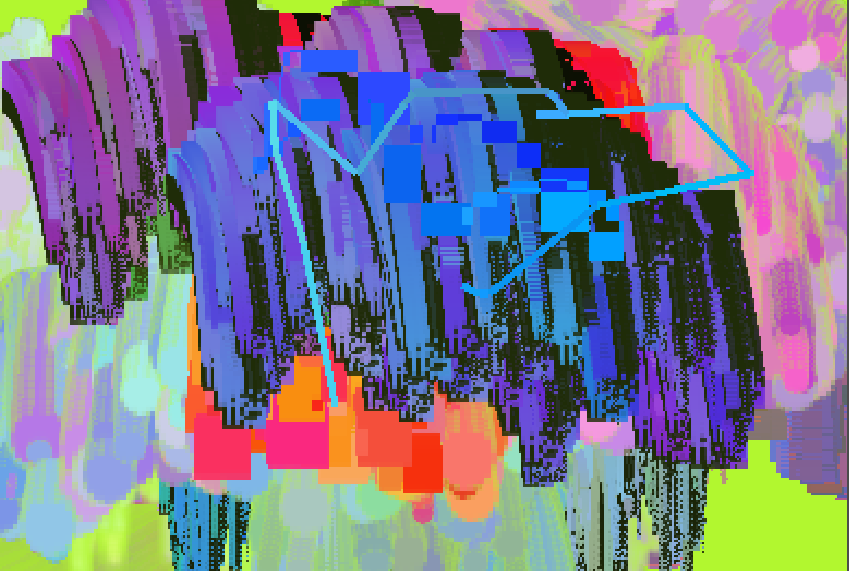
– Action Painting Pro by Ian MacLarty
There are a lot of ways in which you can use human input to generate digital art. The unique ways that you could turn that into an art tool seem unending. It doesn’t just have to be a canvas that you draw lines on.
My going creative tangent is using all the elements that make a good game, and turning that into a tool. So far it’s been mostly design theory informing a fun environment to create art in (like the Electric Zine Maker), but my mind is always blown when you can find examples that make that even more tangible.
My favorite example right now, which I will be mulling over a lot, is Action Painting Pro. Action Painting Pro is a remake of Action Painting and both are really interesting.
Action Painting Pro basically uses player movement to generate art. Messes of color are left behind the player. It uses the theme of a platformer as a jumping board for art (Pun intended. Sorry, I couldn’t help myself)…
There are a few icons on each platform. They shift around so it’s hard to stay on it. There’s a level of challenge which makes the resulting art chaotic. You’re basically chasing after the tool you want as you platform.
When you fall off, it reveals the art that was made.
I think this is brilliant. It’s really inspiring to me because (as the player) my drive to want to make something, and kind of control the resulting art, still exists… but I’m also fighting against the game in an interesting way.
What you make in it ends up being beautiful, even if you fail. It’s given me a lot to think about in terms of making an art tool even more like a game.
Action Painting Pro is super wonky. Just for the concept of interfacing with a computer and creating art like this, it is inspiring to me. I love the idea of the art being kind of the “lose state”.
Sure we have examples like Chicory: A Colorful Tale, ART SQOOL, or Okami, where the game highlights creating art as a way to play it (There are many. It’s a theme that’s been done often)… but I get a lot of life from seeing smaller examples like Action Painting.
In this post, I’ve listed many examples of tools that are as super specific as they are small. I think it’s inspiring to see art-driven games that are of similar scale.
Action Painting Pro is another great example of something that’s on the intersection of toy, tool, or game. It’s not quite any one of them, but these things are their own way of making “an art”.
In my own work I’m currently striving to create a tool that you could call a game (the Electric Zine Maker is that), so it’s encouraging to see things like many of the examples listed here.
Before I wrap this up, here are even more links…
– – – – – Art & Music
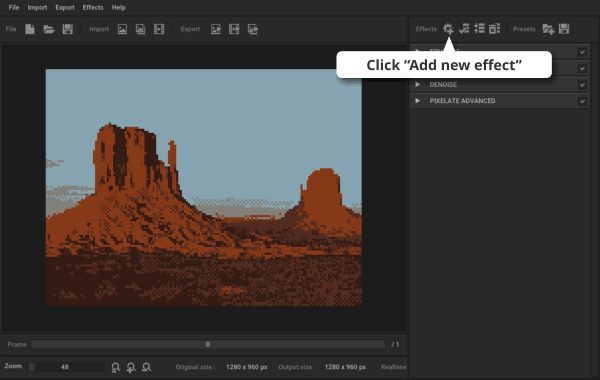
– Pixel Art Workshop ($29.99 USD)
A very feature rich pixel art generation and creation tool. It can create tiles, seamless patterns, pixelate, imports videos, exports gifs, create palettes, and supports a variety of retro dithering modes. There’s a lot in here.
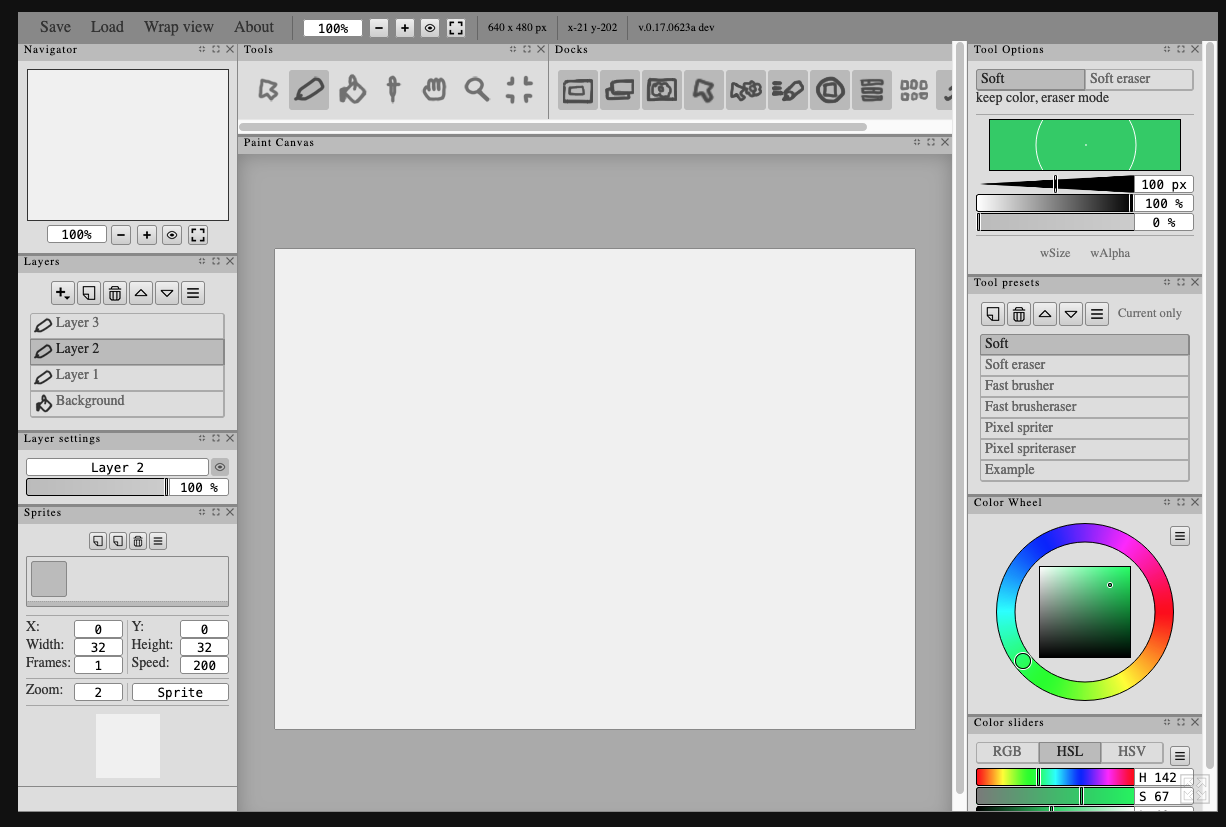
– PaintGo (Free, browser)
PaintGo is an HTML5 painting app. It was started due to frustration with online paint chats and oekaki applications, and the author wanted to do something better and more comprehensive.
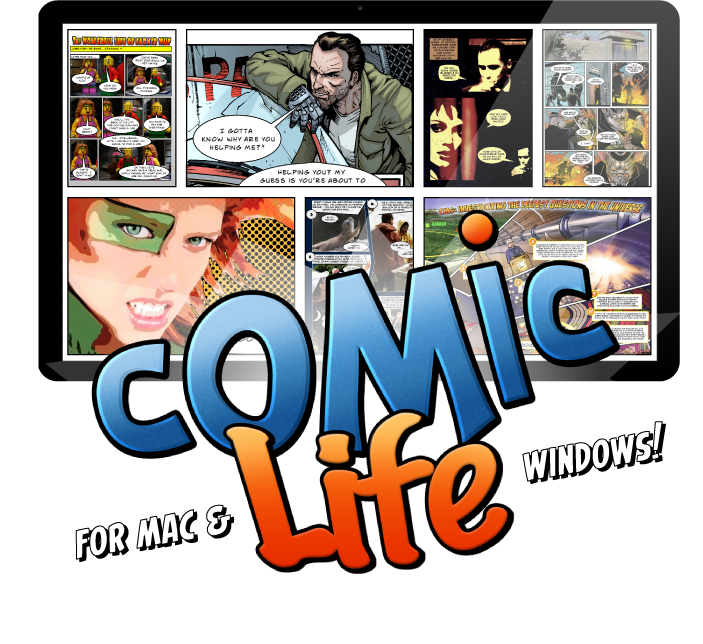
– Comic Life 3 ($29.99 USD)
This is professional software. I am adding it here because it came up in reference to the Electric Zine Maker and it looked novel to me.
“Presenting Comic Life 3, the app with everything you need to make a stunning comic from your own images. Packed with fonts, templates, panels, balloons, captions, and lettering art, Comic Life is a fun, powerful and easy-to-use app with endless possibilities.”
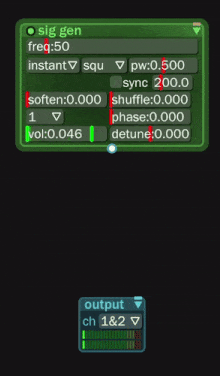
– Bespoke
“Bespoke is a software modular synthesizer. It contains a bunch of modules, which you can connect together to create sounds.”
– – – – – Code & Engines
“Cross-platform (desktop, mobile, console) 3D and 2D game engine supporting many asset formats (glTF, X3D, Spine…) and using modern Object Pascal”
“Stride comes with a robust toolchain that enables you to intuitively and efficiently create, manage and modify all assets of your game.
The suite of editors simplify and automate common development workflows. Its nested prefab and archetype systems scale along all editors and assets.
Stride Game Studio has also been designed so that it can be extended easily. A plug-in system to help users extend the Game Studio is coming soon!”

SUGAR (Not released yet, but I’m adding it here because I’m excited for it.)
“SUGAR is a fantasy-console-inspired, limitation-led game engine!”
“OneLang is a tool which helps writing code in multiple languages at the same time.”
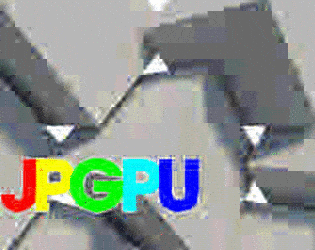
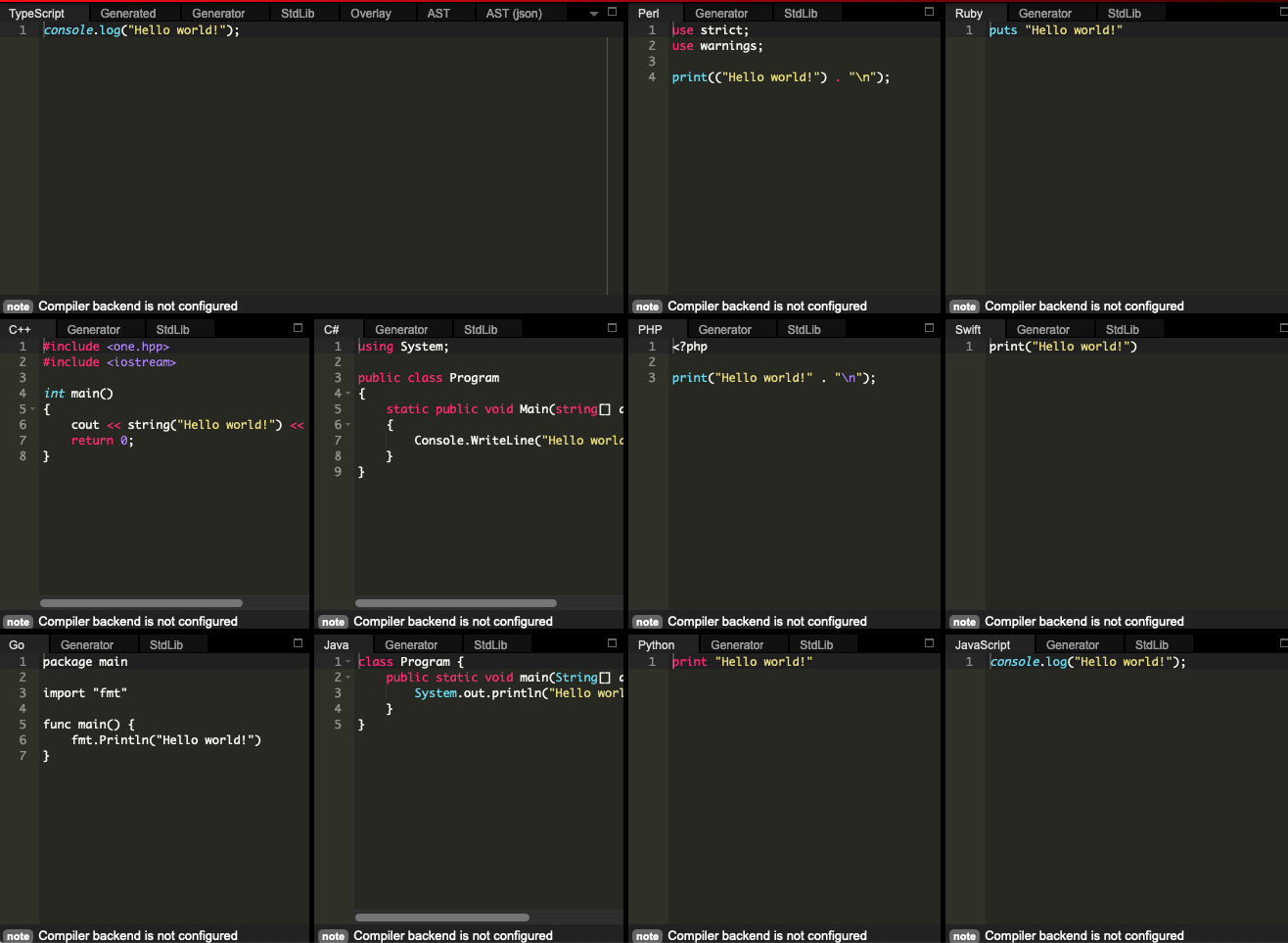
This is fantastic! A couple of tiny typos: “it’s relevance” ? “its relevance”, and “it’s own set or rules” ? “its own set of rules” (2 for 1!).